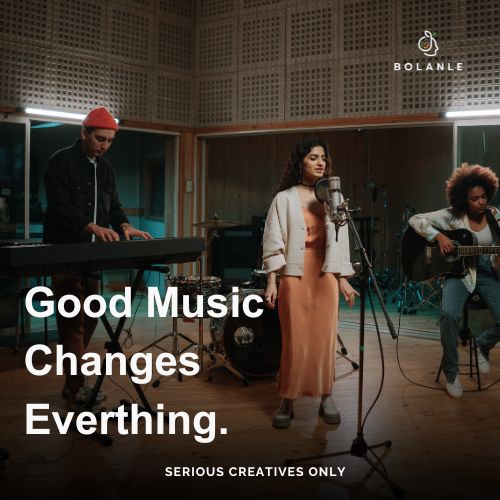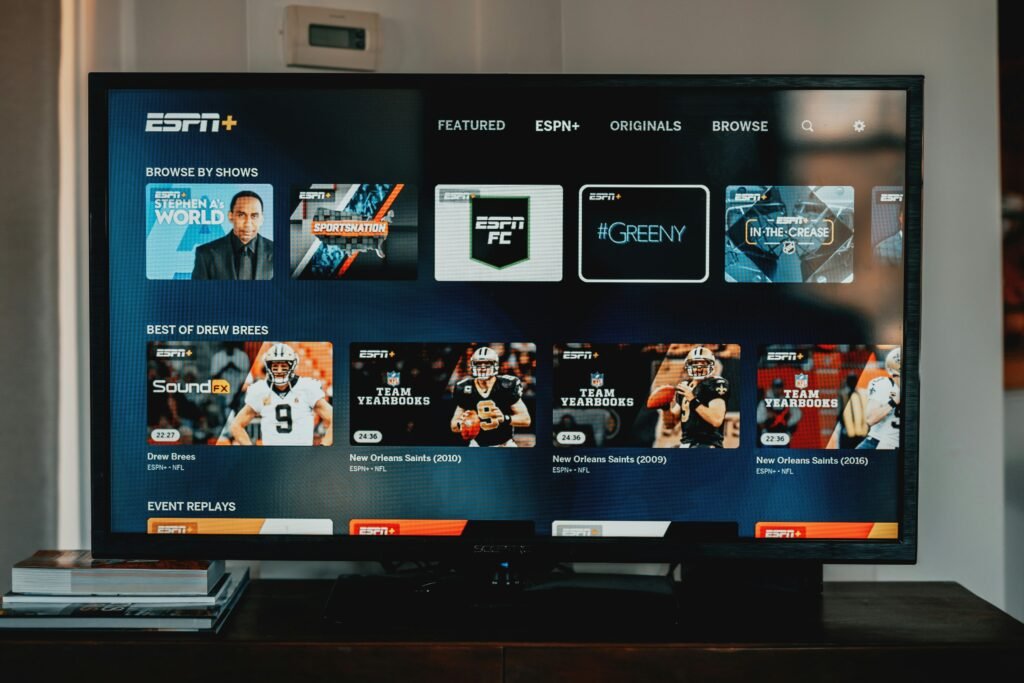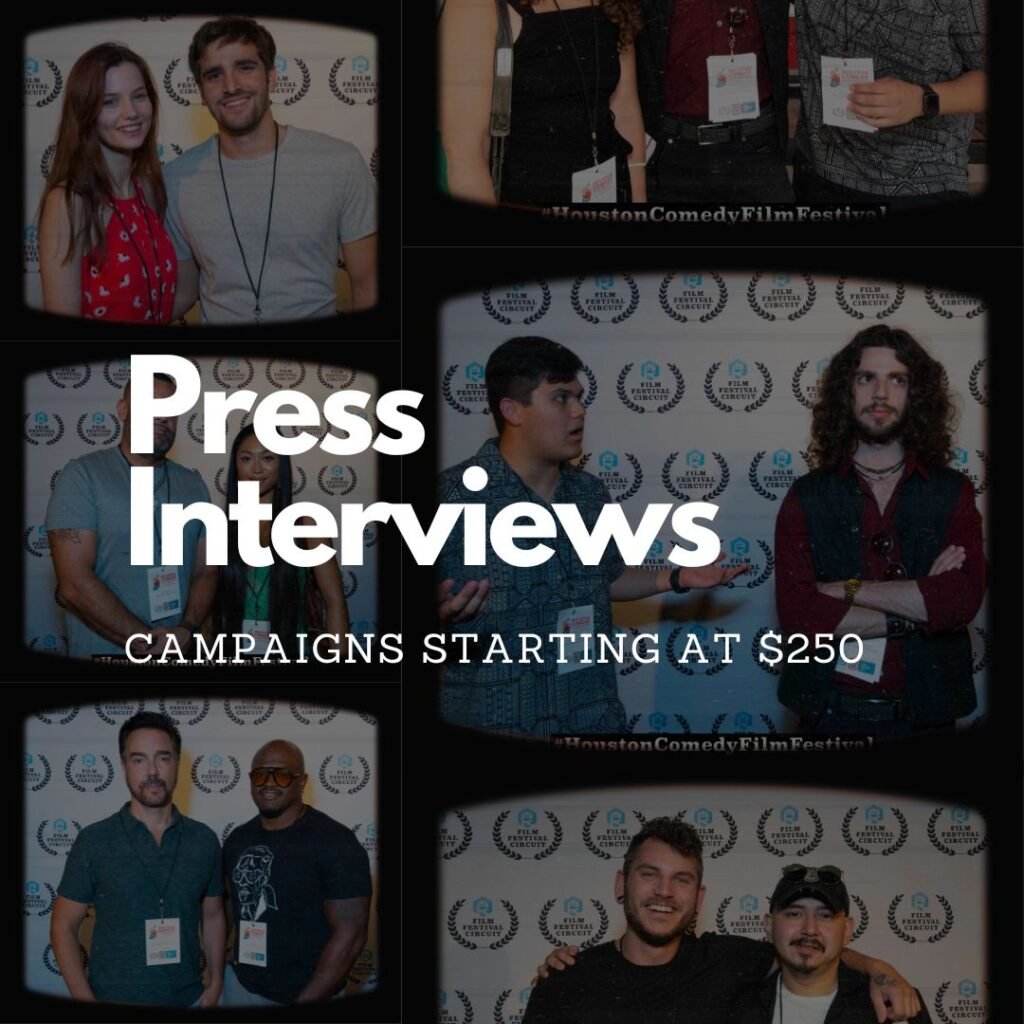Advice
Filmmakers’ Guide to Handling Criticism
Understanding Constructive Criticism
Constructive criticism refers to feedback that is delivered in a manner that is helpful, aimed at promoting improvement, and articulated with the intention of guiding the recipient toward a better outcome. Unlike negative reviews that can often feel disheartening or dismissive, constructive criticism focuses on specific aspects of a work that can be enhanced, allowing the filmmaker to recognize areas for growth without feeling discouraged. This distinction is crucial because it transforms feedback from a mere evaluation into a learning tool that cultivates a positive developmental atmosphere.
In the realm of filmmaking, the art of receiving constructive feedback is imperative. It encourages an objective analysis of the film’s elements—storytelling, cinematography, acting, and pacing, among others. When filmmakers embrace constructive criticism, they open doors to gaining invaluable insights into their work. Such feedback can provide clarity regarding audience perception and reveal technical or narrative flaws that may not be apparent to the creator. By actively seeking out this type of feedback, filmmakers can engage in continuous improvement, leading to more polished and compelling films.
It is essential to recognize that not all criticism holds equal value. Filmmakers must distinguish meaningful insights from unhelpful comments that could lead to unnecessary self-doubt. This requires a discerning mindset, focusing on actionable advice rather than subjective opinions that do not contribute to artistic growth. By doing so, filmmakers can cultivate resilience and a commitment to personal and professional development. Constructive criticism ultimately serves as a cornerstone in the filmmaking process, encouraging an ongoing dialogue that helps creators refine their craft and push the boundaries of their artistic expression.
Building Resilience as a Filmmaker
Resilience is a crucial quality for filmmakers striving to navigate the often tumultuous waters of film criticism. The creative process is inherently vulnerable, and receiving negative feedback can lead to self-doubt and anxiety. However, developing emotional strength allows filmmakers to not only endure critique but also grow from it, thus enhancing their future projects. To foster resilience, filmmakers can adopt several strategies that promote a healthy mindset and creative continuity.
One effective approach is self-reflection, where filmmakers take time to analyze not only the feedback they receive but also their personal responses to it. This practice helps in distinguishing constructive criticism from unwarranted negativity. By understanding their emotional triggers, filmmakers can develop a thicker skin and redirect their focus toward growth rather than personal attacks. Integrating self-reflection into their workflow encourages a deeper appreciation for their artistic choices, reinforcing their confidence in the projects they undertake.
Mindfulness techniques also play a significant role in building resilience. Engaging in mindfulness practices, such as meditation or deep breathing exercises, can help filmmakers manage stress and promote emotional regulation. A mindset grounded in mindfulness allows individuals to observe their thoughts and feelings without judgment, enabling them to better handle the emotional fallout from harsh reviews. This approach cultivates a calm disposition, which is crucial when faced with criticism.
Finally, establishing a supportive network is paramount. Surrounding oneself with fellow creatives who understand the challenges of filmmaking can provide encouragement and constructive dialogue. Such a community fosters a sense of belonging and offers diverse perspectives that can help mitigate the sting of negative feedback. By prioritizing resilience through self-reflection, mindfulness, and support systems, filmmakers can thrive in their artistry despite the inevitable critiques they face.
Learning from Feedback While Honoring Your Vision
For filmmakers, navigating the landscape of feedback can be both enriching and challenging. The ability to learn from constructive criticism while remaining true to one’s artistic vision is a delicate balance that demands discernment. First, it’s vital to acknowledge that feedback is an inherent part of the filmmaking process, serving as a tool for growth. However, filmmakers must differentiate between critiques that foster their artistic journey and those that may lead them astray from their original intent.
To effectively assimilate feedback, one should begin by identifying which suggestions resonate with their vision. This means reflecting on the driving themes and nuances that define the filmmaker’s work. By determining which comments align with their core values and artistic goals, filmmakers can confidently embrace those insights and integrate them into their projects. For instance, if a viewer suggests enhancing a specific character’s backstory that reflects the overarching narrative, this feedback may prove beneficial and worthy of consideration.
Conversely, critiques that seem misaligned with the filmmaker’s vision should be approached with caution. Maintaining artistic integrity is imperative; therefore, it is crucial to evaluate the source and intent of the feedback. Does it stem from a place of understanding or merely personal preference? Filmmakers should develop a critical eye to sift through the myriad of opinions available to them. This discernment enables them to discard feedback that may dilute their unique voice, thereby safeguarding their creative expression.
Ultimately, the journey of filmmaking is one of exploration, and learning from feedback while honoring one’s vision is essential. This ongoing dialogue between a creator’s inner compass and external insights can significantly enhance the refinement of their work. By cultivating this balance, filmmakers can evolve their projects meaningfully while remaining true to their artistic identity.
Practical Steps for Receiving and Implementing Criticism
Receiving and implementing criticism is a crucial skill for filmmakers aiming to enhance their craft. The first step in this process is to seek feedback from trusted sources, such as mentors, peers, or industry professionals. These individuals can provide valuable insights that are often grounded in experience. It’s essential to choose reviewers who understand the nuances of filmmaking, as their perspectives will yield constructive criticism rather than superficial comments. When sharing your work, consider using clear questions to guide the feedback, encouraging reviewers to focus on specific elements such as pacing, character development, or cinematography.
Establishing a constructive feedback loop within peer sessions can significantly benefit personal growth and project refinement. These sessions should foster an environment where critique is encouraged and appreciated. Filmmakers can benefit from inviting peers to share their works in progress and provide feedback in return, creating a culture of mutual support. During these sessions, it is essential to maintain an open dialogue and encourage questions that dive deeper into the creative decisions made. This exchange can help dissect both strengths and weaknesses in a project while fostering a collaborative spirit.
Approaching criticism with an open mind is vital in the process of learning and adapting. Reframing feedback as a tool for growth rather than a personal affront allows filmmakers to process criticism more effectively. As filmmakers navigate their creative journeys, it is also important to set personal goals that align with their development. These goals can be based on the criticism received and should serve as benchmarks for improvement. By doing so, filmmakers can ensure that feedback becomes a catalyst for advancement, propelling their projects forward rather than anchoring them in self-doubt.
Bolanle Media is excited to announce our partnership with The Newbie Film Academy to offer comprehensive courses designed specifically for aspiring screenwriters. Whether you’re just starting out or looking to enhance your skills, our resources will provide you with the tools and knowledge needed to succeed in the competitive world of screenwriting. Join us today to unlock your creative potential and take your first steps toward crafting compelling stories that resonate with audiences. Let’s turn your ideas into impactful scripts together!
Advice
How AI Is Forcing Everyone Into the Entrepreneur Game

Remember when having an ordinary job felt safe? Those days are over. The arrival of artificial intelligence isn’t just automating tasks—it’s blowing up the very idea of job security and ushering in an era where adaptability and entrepreneurship aren’t optional, they’re survival skills. Welcome to the new game. Average is automated, and now, everyone needs to think—and act—like an entrepreneur.

AI Isn’t Coming—It’s Already Here (And It’s Taking Jobs)
It’s not sci-fi anymore. By 2025, AI and automation are expected to displace as many as 85 million jobs worldwide, from customer service roles to entry-level tech positions, with 13.7% of U.S. workers already reporting being replaced by robots or AI-driven systems. Young people are especially hard-hit: tech unemployment among 20- to 30-year-olds has jumped 3% this year alone in AI-exposed roles. And the impact isn’t slowing down. Analysts say up to 60% of jobs in advanced economies could see tasks automated in the near future, with 30% of workers fearing outright replacement.
Why Average Isn’t Enough Anymore
The old industrial world ran on “the bell curve”—reliably rewarding the middle. If you were competent, you were comfortable. But in the digital age, AI is programmed to do average things perfectly and instantly. Now, the top 10%—the specialists, the creators, the difference-makers—snap up 90% of the rewards, while the rest get left behind.

Enter: The Entrepreneur Game
Here’s the twist: being entrepreneurial isn’t just about starting a business. It’s about building a personal brand, mastering a specialty, and continually learning or creating something valuable that AI can’t easily duplicate. Tech isn’t killing opportunity—it’s changing what it looks like.
- 20 million Americans now expect to retrain for new, more creative or tech-forward careers in the next three years.
- The fastest-growing “jobs” are digital and entrepreneurial: creators, consultants, coaches, prompt engineers, content strategists, AI-human collaboration experts, and niche community builders.
- Nearly half of companies that adopted AI are now automating roles, but they’re also creating demand for new skills and products almost overnight—a perfect playground for entrepreneurial thinking.
Survival Guide: How to Play (and Win) the New Game
- Pick Your Niche: Get laser-specific. Being “good at business” is out. Being the best at “helping consultants automate YouTube marketing with AI tools” is in—and global.
- Build Digital Assets: Write, film, code, design, research—create things that can scale, sell, and build your brand, wherever you are.
- Stay Adaptable: Reskill, upskill, and don’t be afraid to jump into new industries. Today’s winners are the ones who can pivot quickly and ride the next wave, not cling to what worked last year.
- Own Your Audience: Whether it’s a newsletter following, a YouTube channel, or a private Slack group, your future depends on connecting with people who value what you do—AI can’t compete with real, human influence.

Bottom Line
AI didn’t just move the goalposts—it changed the field. Being “average” is now a risk, not a guarantee. The winners in this new economy aren’t waiting for work to come to them—they’re proactively creating, collaborating, and cashing in on the skills, products, and experiences AI can’t touch. The entrepreneur game isn’t just for founders anymore. Ready or not, it’s for everyone.
Advice
How to Make Your Indie Film Pay Off Without Losing Half to Distributors

Making an independent film is often a labor of love that can take years, countless hours, energy, and a significant financial investment. Yet, for many indie filmmakers, the hardest part is recouping that investment and making money once the film is finished. A common pitfall is losing a large portion of revenue—often half or more—to sales agents, distributors, and marketing expenses. However, with the right knowledge, strategy, and effort, indie filmmakers can maximize their film’s earnings without giving away so much control or profit.

Here is a comprehensive guide to keeping more of your film’s revenue and ensuring your film gets the audience and financial return it deserves.
Understanding the Distribution Landscape
Most indie filmmakers traditionally rely on sales agents and distributors to get their films to audiences. Sales agents typically take 15-20%, and distributors can take another 20-35%, easily cutting your revenue share by half right from the start. Additionally, marketing costs that may be deducted can range from a few thousand to upwards of $15,000, further eating into profits. The accounting is often opaque, making it difficult to know how much you truly earned.
Distributors nowadays tend to focus on worldwide rights deals and use aggregators to place films on streaming platforms like Amazon, Apple TV, and Tubi. These deals often do not fetch the best revenue for most indie filmmakers. Many distributors also do limited outreach, reaching only a small number of potential buyers, which can limit the sales opportunities for your film.
Becoming Your Own Sales Agent
One of the most important shifts indie filmmakers must make today is to become their own sales agents. Instead of relying entirely on intermediaries, you should learn the art and business of distribution:
- Research and build an extensive list of distributors worldwide. Top filmmakers have compiled lists of hundreds of distributors by country and genre. Going wide increases your chances of multiple revenue deals.
- Send personalized pitches to hundreds of distributors, showcasing your finished film, cast details (including social media following), genre, logline, and trailer. Ask if they want to see the full feature.
- Don’t settle for a single distributor or a big-name company that may not prioritize your film. Instead, aim for multiple minimum guarantees (MGs) from niche distributors in individual territories like Germany, Japan, and the UK.
- Maintain transparent communication and track every outreach effort carefully.

Pitching and Marketing Tips
When pitching your film:
- Highlight key genre elements and target audience since distributors are often risk-averse and look for specific film types.
- Include social media metrics or fanbase counts, which can make your film more attractive.
- Provide a strong one-minute trailer and a concise logline.
- Be prepared for rejections; even a 5% positive response rate is success.
Marketing is also crucial and can’t be left solely to distributors. Understanding and managing your marketing efforts—or at least closely overseeing budgets and strategies—ensures your film stands out and reaches viewers directly.
Self-Distribution and Hybrid Models
If traditional distribution offers no appealing deals, self-distribution can be a viable option:
- Platforms like Vimeo On Demand, Amazon Prime Direct, and YouTube allow you to upload, price, and market your film directly to audiences while retaining full creative and revenue control.
- Aggregators like Filmhub and Quiver help place self-distributed films on multiple streaming services, often for a reasonable fee or revenue share.
- The hybrid distribution model combines some traditional distribution deals with self-distribution, maximizing revenue streams, audience reach, and control over your film’s destiny.
Takeaway: Be Proactive and Entrepreneurial
The indie filmmaking world is now as much about entrepreneurship as artistry. Knowing distribution essentials, taking ownership of your sales process, and actively marketing your film are no longer optional—they are key for financial success.
By investing time in outreach, exploring multiple territories, securing minimum guarantees, and considering hybrid or self-distribution approaches, indie filmmakers can keep more of their earnings, increase their film’s audience, and avoid being sidelined by opaque deals and slim returns.
The days of handing your film over to a distributor and hoping for the best are gone. The winning formula today is to be your own sales agent, marketer, and advocate—empowered to make your indie film pay off.
Advice
How to Absorb Books 3x Faster in 7 Days

Reading is one of the most powerful skills you can develop — but most people read far slower than they could, spend time on information that doesn’t matter, and then forget what they read a week later. The Triforce Method changes that. It’s a three-part strategy that helps you increase your reading speed, focus on the most important details, and actually remember and use what you’ve learned.

Strategy 1: Increase Your Baseline Reading Speed
The first step is to read faster — but not by rushing. Instead, you’ll train your brain and eyes to process information more efficiently.
1. Remove Your Internal Monologue
Most people “hear” the words in their head when reading. This subvocalization caps your speed to that of normal speech — about 200–250 words per minute. To double your speed, you need to see the words, not hear them.

Think about a stop sign — you don’t sound out “STOP” in your head; you just recognize it instantly. You can train this with tools like Spreeder (free, not sponsored), which flashes text at higher speeds and groups words together. This forces your brain to process visually rather than subvocally.
With practice, this feels natural — the author of this method went from 250 wpm to over 500 wpm in just a short time.
2. Use a Visual Tracker
Your eyes aren’t naturally smooth when moving across text — small jerks and backtracking slow you down. Try this:
- Look at your screen and move your eyes from left to right. Notice the small jitters.
- Now put your finger or a pen in front of you and track it smoothly. Immediately, your motion is more consistent.
A tracker (your finger, a pen, or even a cursor) keeps your eyes moving forward, prevents regression, and lets you maintain speed. Over time, increase your tracking speed. This alone can add another 100+ words per minute to your pace.

Strategy 2: Have a Reading Strategy
Speed means nothing if you waste time on unimportant details. The second step is knowing when to read fast and when to slow down — especially for non-fiction.
The 80/20 Rule
In most non-fiction books, 80% of the value comes from 20% of the content. The rest is often filler, examples, or repetition.
For example, in Atomic Habits, the core lessons are surrounded by stories and case studies. Using the Triforce Method:
- Read most sections quickly (internal monologue removed, visual tracker engaged).
- When you hit a “golden nugget” of advice, slow down, think about it, and absorb it.
The key here: adapt your speed based on content. Reading 700 wpm during a key concept will reduce comprehension — so drop to 500 wpm or less when it matters.
Avoid “highlighting every sentence” syndrome. Focus on what really moves the needle.
Strategy 3: Summarise and Consolidate
Reading faster and smarter means nothing if you immediately forget what you’ve read. The third pillar of the Triforce Method is about retention and application.
Summarising
After each page, summarise it in 1–2 sentences in your own words. Even “nothing important happened here” counts. This habit forces your brain to engage with the material and improves comprehension.
Consolidating
Especially for non-fiction, you must take action on what you read. Learning is about changing behavior, not just collecting ideas.
Example: After reading about habit tracking in Atomic Habits, actually start tracking your habits that day — don’t just file the advice away for “someday.” The author of this method even paused reading for 24 hours to implement changes before continuing.
If you don’t change anything after reading, you haven’t truly learned.

When to Use This Method
- Learning-focused reading: Non-fiction, textbooks, technical guides, exam prep — anytime speed, focus, and retention matter.
- Enjoyment reading: Fiction, poetry, or literature may not require all these techniques — unless you want to increase speed intentionally.
The Bottom Line
The Triforce Method combines:
- Speed – Removing subvocalization + using a visual tracker.
- Strategy – Applying the 80/20 rule and adapting your pace.
- Retention – Summarising and acting on what you read.
With consistent practice, you can double your reading speed, focus only on what matters, and actually remember and use the information.
If you’d like, I can also make a condensed, visually appealing infographic summarizing the three strategies in the Triforce Method so it’s easier to refer back to.
Do you want me to prepare that next?

 Entertainment2 weeks ago
Entertainment2 weeks agoAfter Party: Festival Winner for Best Romantic Short

 News2 weeks ago
News2 weeks agoCamp Wackapoo – Rise of Glog Takes Center Stage

 Entertainment2 weeks ago
Entertainment2 weeks agoFrancisco Ramos Takes Top Mockumentary Award at Houston Comedy Film Festival

 Politics3 weeks ago
Politics3 weeks agoMamdani’s Victory Triggers Nationwide Concern Over New York’s Future

 News2 weeks ago
News2 weeks ago50-Year Mortgages: A Game Changer or a Debt Trap?

 Politics2 weeks ago
Politics2 weeks agoTrump’s $2,000 Tariff Dividend Plan: Who Gets Paid?

 Film Production2 weeks ago
Film Production2 weeks agoWhy China’s 2-Minute Micro Dramas Are Poised To Take Over The U.S.

 News3 days ago
News3 days agoEpstein Files to Be Declassified After Trump Order







































